I've been offered a new Fixed Rate Offer, the first is the new Tariff and the second is my current tariff.
I really don't know what to do
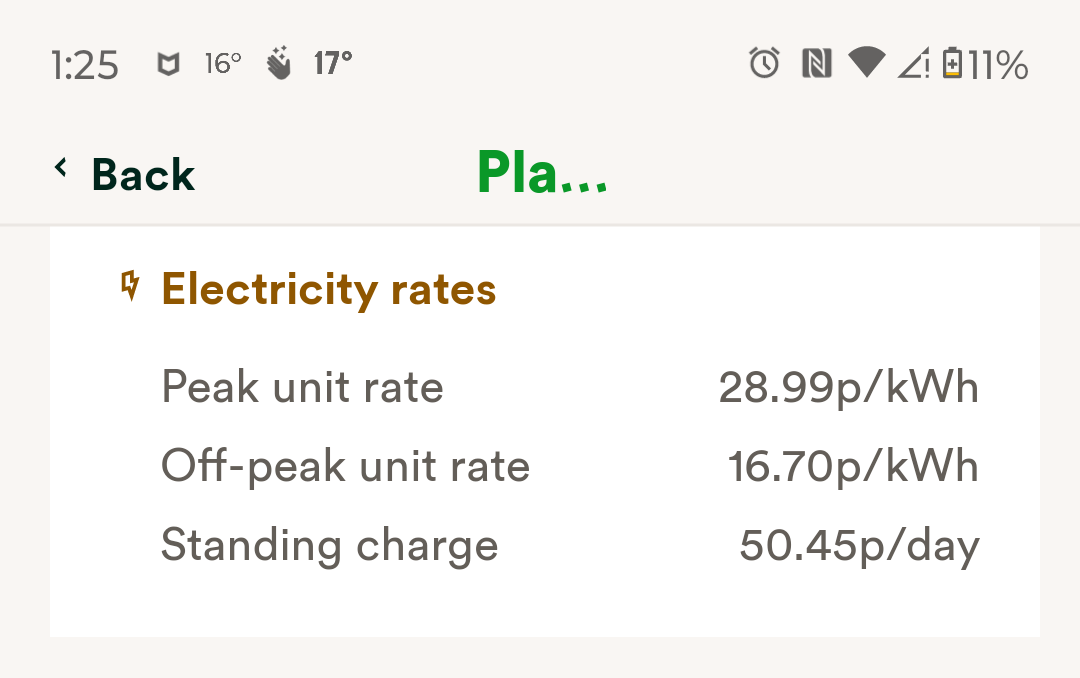
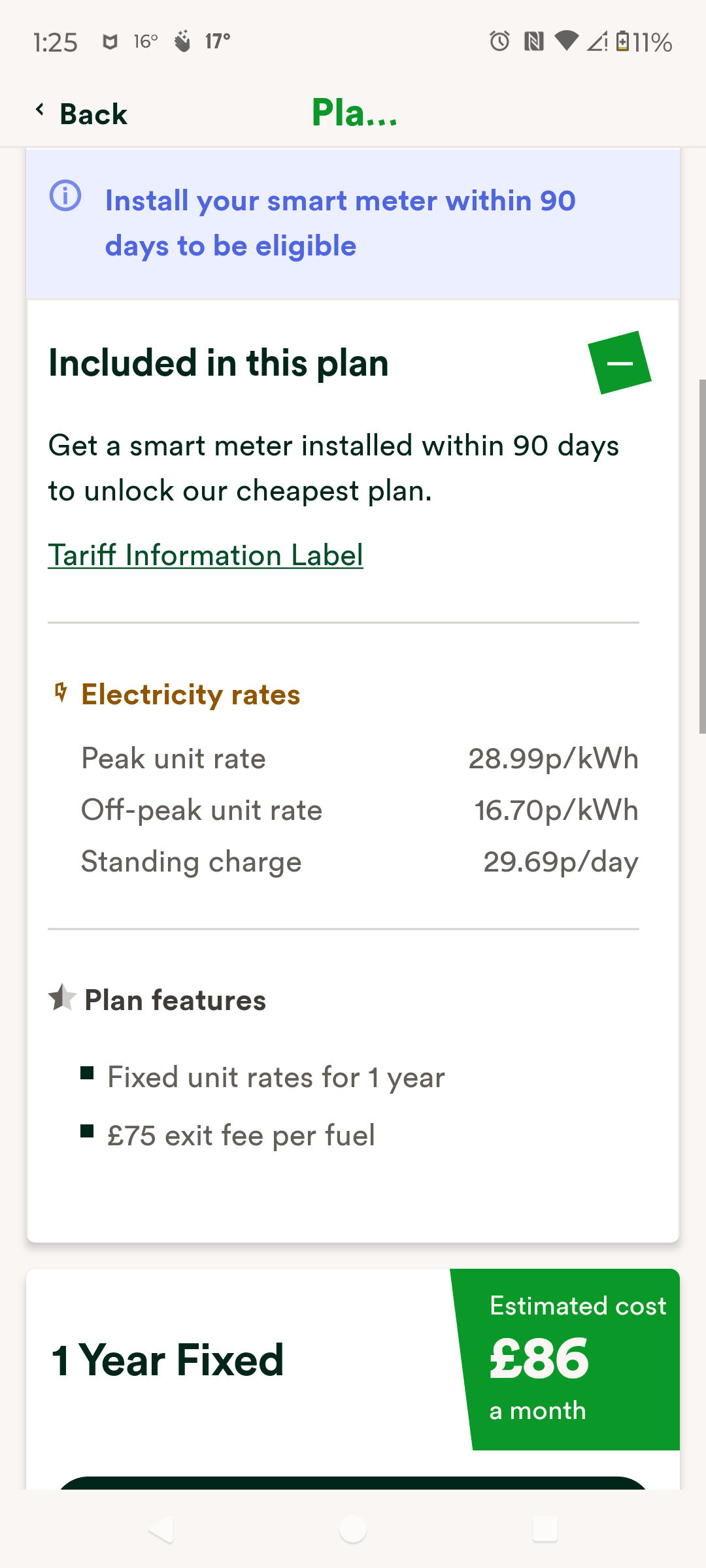
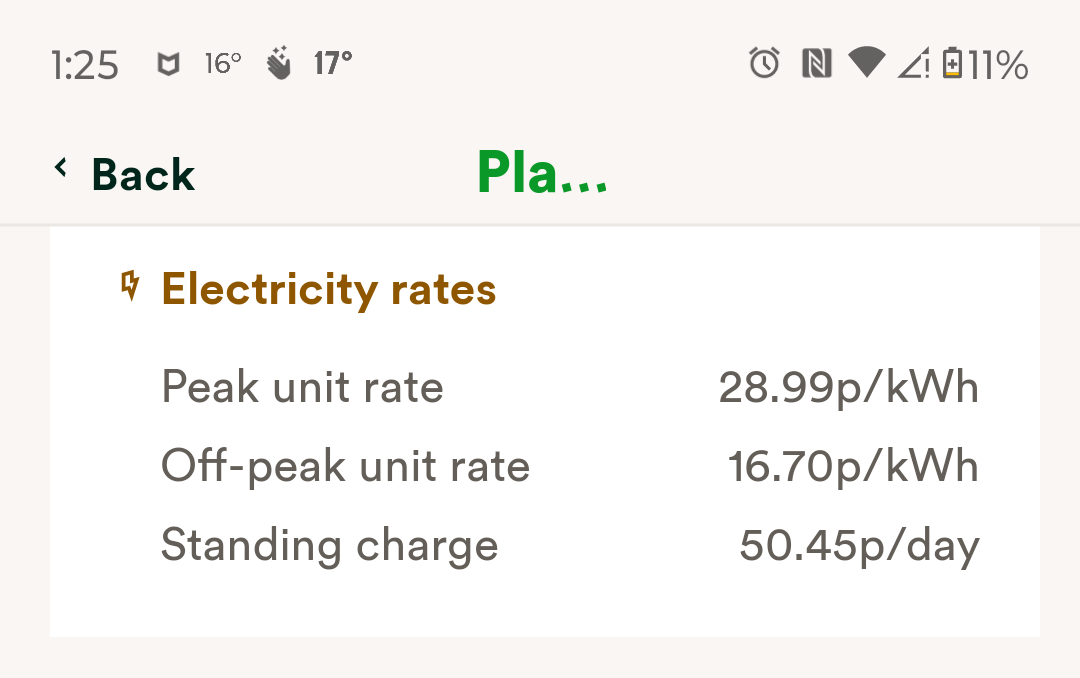
I've been offered a new Fixed Rate Offer, the first is the new Tariff and the second is my current tariff.
I really don't know what to do



... the first is the new Tariff and the second is my current tariff.
Sorry, Lucky, but it’s not exactly clear which is your current tariff and which you’re being offered. Apart from that, we need to see both what the plans are called and, if your current plan is a fixed-rate one, when it ends.
It looks from the middle screenshot as if you’re a medium sort of consumer, but at the lower end of those who have electric heating (the standing charge on this plan amounts to only about 10% of the total). We’d have to know what your peak rate and offpeak rate annual usage is to be able to do any calculations to help you. That unusually low standing charge is surprising - the price-capped standing charge is currently 50-60 p/day depending on where you live. And you have to be careful to note whether the rates you’re seeing include VAT or not. The ones in the middle picture do, but it’s not obvious whether the others do as well - I guess they don’t.
So, a few more details would help. The online Plan page should give the information we need, apart from perhaps the day/night split in your annual consumption. To find that, you’d have to find the most recent bill and the corresponding one from a year ago, then note the meter readings on them. Subtract last year’s closing figures from this year’s to get the peak and offpeak usage.
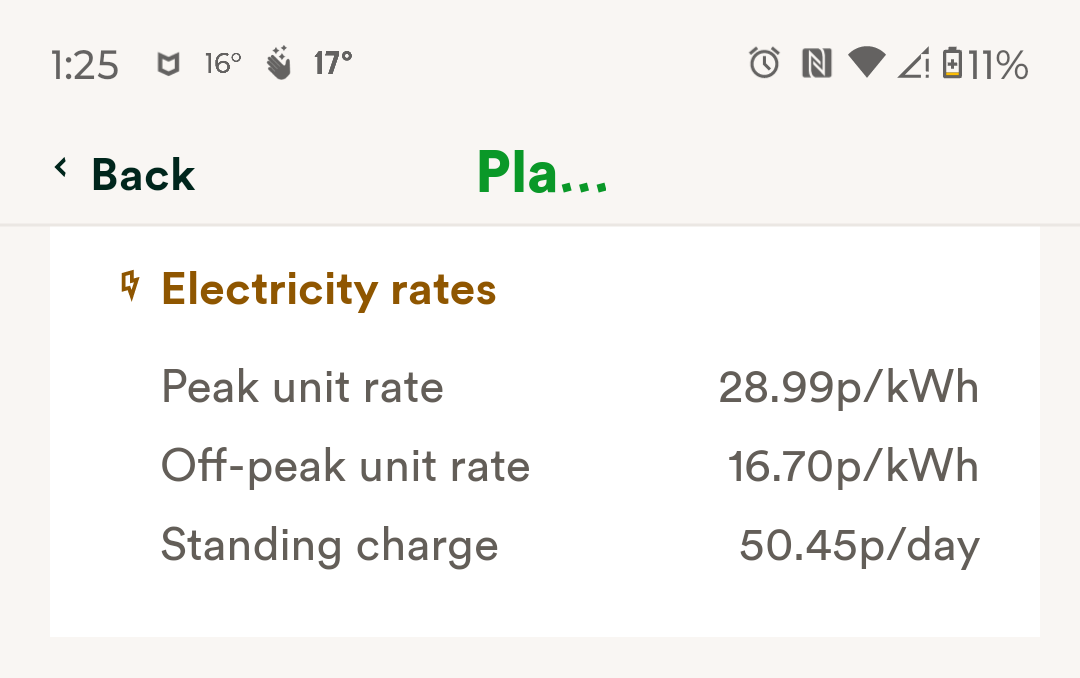
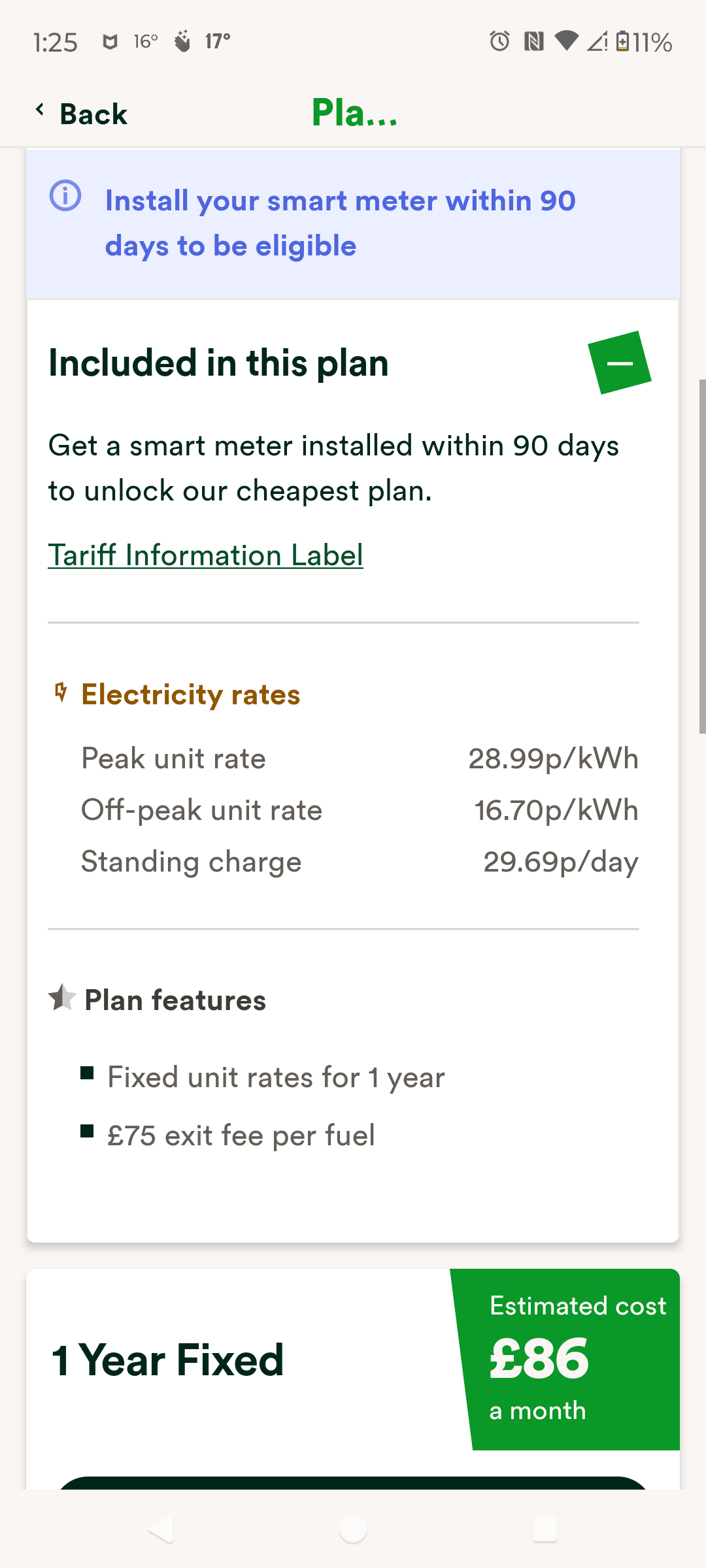
And this is the One that's been offered to my which also includes the VAT.
OK. What about the other things I asked about?
The only difference, then, is in the standing charge. There’s no way of knowing how this will change between now and a year hence, but we do know that for Standard Variable Tariffs (like Simpler Energy) it will remain more or less unchanged until 1 October. The offer you’re seeing would save you up to £76 a year in standing charges.
The unit costs are another matter completely. We’re going to see a fall next month, of about 9½% on average, but then rates are widely expected to rise again on 1 October, possibly by 15% or more. Time to dig out your crystal ball.
Hi
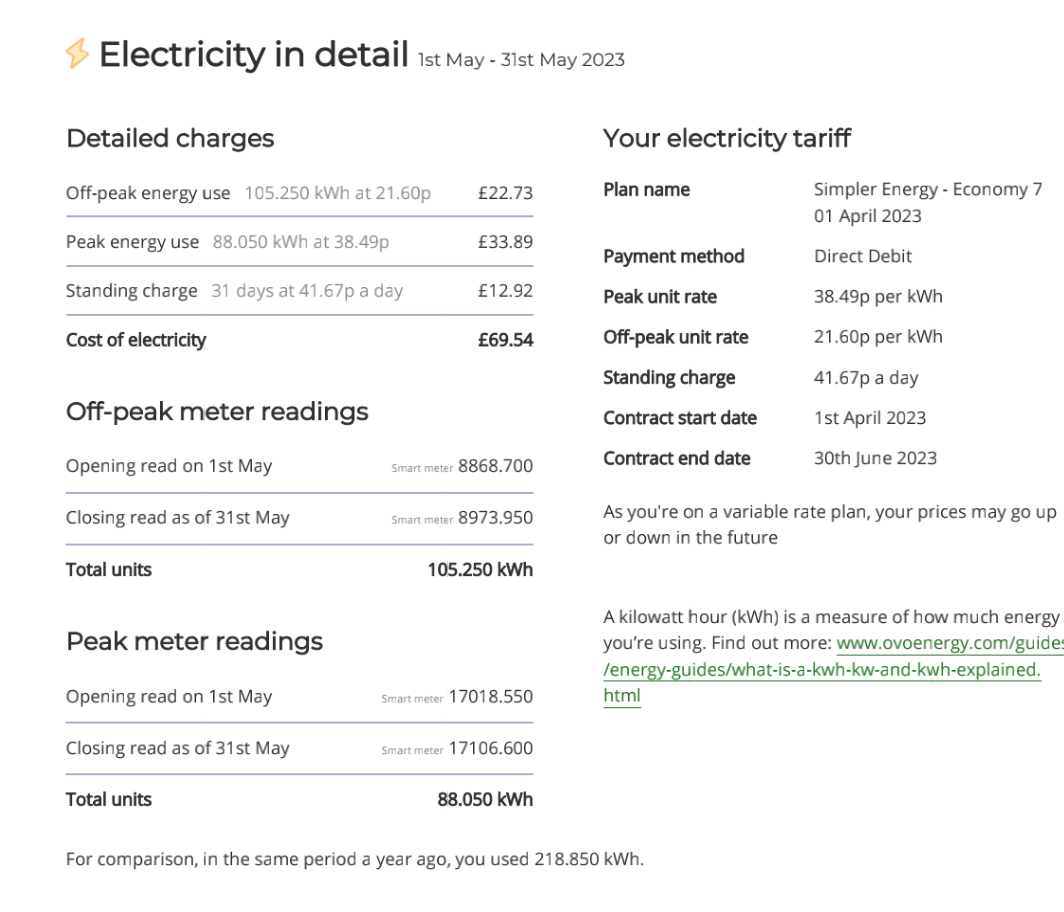
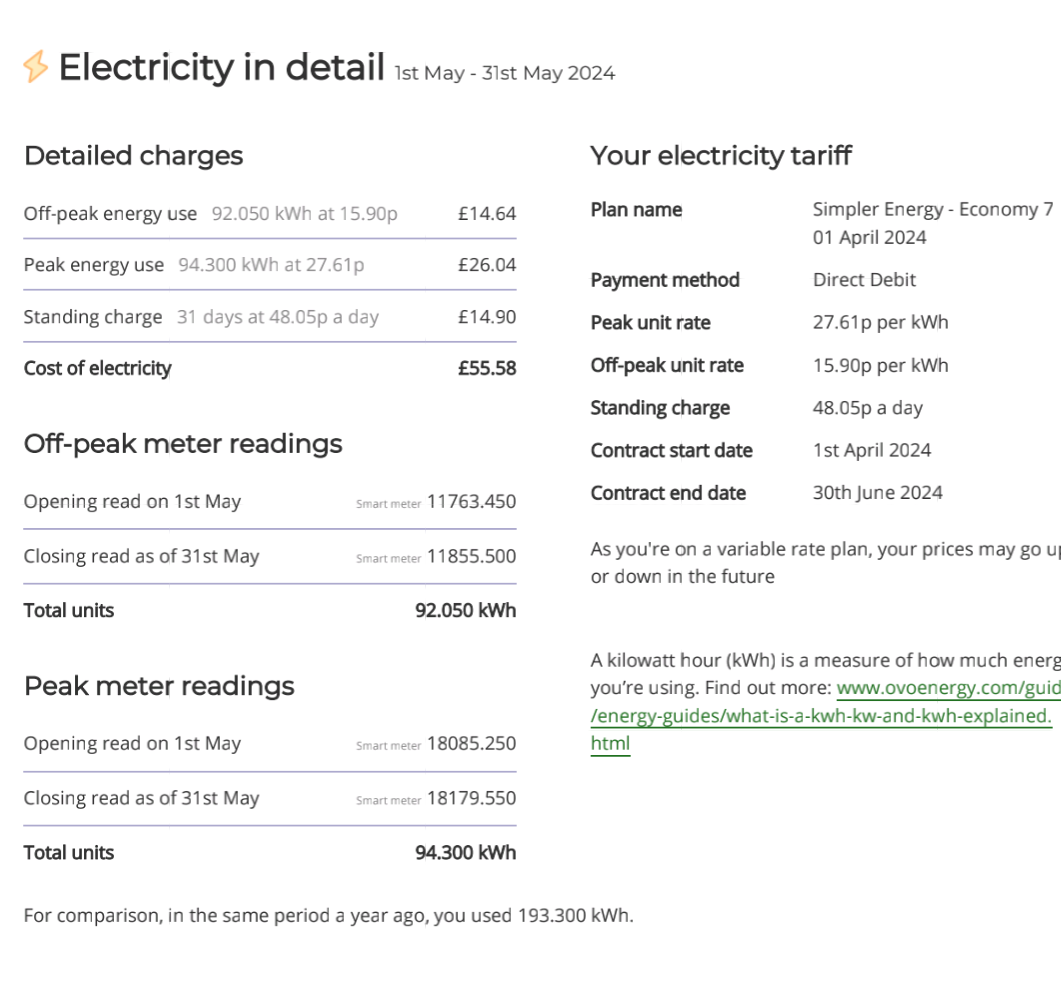
That helps! We can see that your usage over the past year has been:
|
| 31/05/24 | 31/05/23 | Difference |
| Offpeak | 11855.500 | 8973.950 | 2881.550 |
| Peak | 18179.550 | 17106.600 | 1072.950 |
|
|
| Total | 3954.500 |
Your offpeak usage was 2881.550/3954.500 = 73% of the total. This means that Economy 7 is working well for you, saving a lot when compared with what you would pay on a single-rate tariff.
The cost of fuel at current rates would be:
|
| Units | Rate £ | Cost | VAT 5% | Cost inc. VAT |
| Offpeak | 2881.550 | 0.1590 | £458 | £23 | £481 |
| Peak | 1072.950 | 0.2761 | £296 | £15 | £311 |
| Total | 3954.500 |
| £754 | £38 | £792 |
This is about what you would pay on the fixed-rate plan, but on the variable plan, it might be l£792/4 = £198 x 9.5% = ] £19 cheaper next quarter, but e£198 - £19 = £179 x 15% = ] £27 more expensive in the quarter after that. No-one has any real idea what the rates will be next year.
Meanwhile, the standing charge would be about n0.5045 - 0.2969 = 0.2076 x 365/4 = ] £19 cheaper per quarter for the fixed rate at least until 1 October. So you’d break even over the next quarter (July-September) and possibly start saving from 1 October onwards.
That depends, of course, on what happens with standing charges in the fourth quarter, and that’s what no-one has any idea about. There are moves afoot to have them reduced, but who for and by how much remains to be seen. The new government may well have something to say about it, since there will be considerable pressure on them to do something to help those who use least energy (particularly those who can’t afford to spend more) who are at most disadvantage from high standing charges. Any reduction will probably be loaded on to the unit price, in which case a fixed-rate tariff with a low standing charge may well be a good bet, because any such changes wouldn’t have any effect on it.
The decision is yours. If you’d like the peace of mind that comes with knowing precisely how much you’ll be paying for the next year, fix. If you expect the fixed-rate tariff to work out cheaper over the year than the variable one, fix. If you suspect that the fixed-rate tariff will work out prohibitively more expensive, don’t fix.
And last: I fixed for a year last month, at a much higher standing charge than you’re currently being offered. Perhaps I should have waited a bit ...
Thank you
… you have given me a lot to think about, I think I will wait until the end of this month and go from there
That’s the problem with attractive fixed-rate deals. It’s a bit like DFS sales, except that you don’t know when the sale will end. The next time you look, that tariff may well have gone away, usurped by another less favourable one. Then again, the replacement might be more favourable. You can never know, so you just have to gamble. It’s not easy to make predictions, especially about the future, but that’s what the people who work out these tariffs are doing all day.
There is method in their madness, though. The number of customers allowed to take up an offer like the one you had is probably limited. Once the quota is filled, that’s it. The company know how much they stand to lose if the predictions were wrong, so they’re taking a gamble, too. It’s both swings and roundabouts for them, but for the customer, it’s really only one or the other. Make sure you get on the right ride!
No account yet? Create an account
Enter your E-mail address. We'll send you an e-mail with instructions to reset your password.